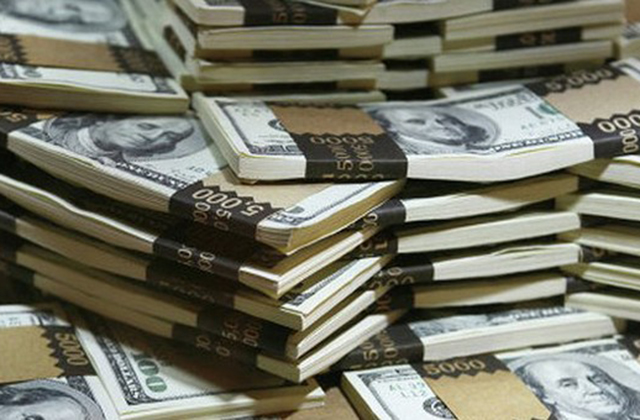
The effect of decreasing rate

During the government’s last session on December 29, 2016 PM Karen Karapetyan, applying to Artur Javadyan, Chairman of the Central Bank of Armenia (CBA), asked whether CBA will constantly reduce refinancing rate.
Prior to that session on December 27, 2016 CBA council decided to decrease refinancing rate by 0.25 percentage points (pp), defining it as 6.25%.
And before that, when Karen Karapetyan was appointed as the PM, CBA twice decreased the interest rate. First, on September 28, 2016 reducing refinancing by 0.5pp, reducing from 7.25% to 6.75%, and after it, on November 16—reducing from 6.75% to 6.5%.
Thus, after Karen Karapetyan’s appointment, in a period of three months CBA reduced the interest rate by three phases, on the whole by 1pp, which is a considerable change.
And despite the fact that prior to Karapetyan’s appointment from early 2016 CBA had reduced it for 5 times—from 8.75% to 7.25% (more than in the period of Karen Karapetyan), decrease of recent three months was perceived as present to the new PM.
Why is decrease of refinancing rate considered a present to the government and why is PM interested in it? And generally, why is it important?
Refinancing rate is one of the tools of monetary policy with the help of which CBA stabilizes price growth. It’s the interest rate, by which CBA provides loans to the banks and other financing organizations.
By that money banks then extend loans to the customers, i.e. refinancing rate impacts on interest rates of loans allotted to the citizens. It doesn’t have an immediate effect, but it has to some dimension.
How does it have an effect on prices? When CBA raises the interest rate, after a while loans provided by the banks rise in price as well. People take less loans, money circulation decreases, accordingly, consumption and demand reduce as well. And when demand decreases, prices drop. Interest rate reduction leads to the contrary effect—rise in price.
Currently the second phenomenon is taking place—we have drop in price and in future they aren’t anticipated. CBA weakens monetary policy to overcome drop in price. And people wonder why should they fight against drop in price and why is it bad? Yes, from the perspective of separate consumers it’s beneficial to buy cheap products. However, from economy perspective drop in price and such anticipations are observed as a negative phenomenon. For instance, if a businessman produces a chair cost price of which is AMD 5000, then he wants to sell it by AMD 6000.
If the price for chair becomes AMD 5500, it won’t be beneficial. And if he knows that the price will drop more, he won’t produce anything, suspend the production and think over migration. This, in its turn, means increase of unemployment, decrease of incomes and weakening of economic activity.
Thus, drop in price is not less desirable phenomenon, than rather high rise in price. That’s why there are precedents, when central banks of some countries have defined negative refinancing rate to boost rise in price (fight against drop in price), i.e. not interest rates have been charged from banks while allotting loans, but they have sold them.
As a rule, prices are tended more to grow rather than drop, i.e. central banks mainly strive to “put a bridle on rise in price”. They make money expensive, which restrains price rise, however, they inhibit economic growth. Here the main contrast is being manifested between the bank and the government.
Top issue for the government is economic growth, and for CBA—price regulation. For instance, in late 2014, when Armenian dram (AMD) sharply depreciated, CBA toughened its policy and raised the interest rate to 10.5%, as there were risks that dram depreciation may lead to sharp rise in price of imported commodities. And despite criticism, CBA didn’t mitigate its policy for a lasting period, as its issue is provision of price stability.
Now let’s pass on to the Q&A mentioned in the beginning of the article. In reply to PM’s question, CBA stated, if necessary, refinancing rate will be reduced. It’s noteworthy that on December 27 in parallel with rate reduction CBA council recorded that policy rate today is rather close to country’s risk-premium level, which basically is considered a lower border of rate for developing countries, i.e. hinted that even lower rate is becoming risky.
However, 3 days ago—14 February, 2017 at the session held in CBA Dilijan Training and Research Centre the council passed a decision to reduce refinancing rate by 0.25pp, defining it as 6.0%. This is rather low rate: refinancing rate was defined 6% 6 years ago—in February 2010.
Can it be stated that this is a gift to the government? Hardly. Only in this case purpose of CBA—price stability, and purpose of the government—economy activation, coincide.
Currently CBA doesn’t observe risk for rise in price, just the contrary, it attempts to take it out from the environment of price drop. Moreover, in 2017 the government will implement restraining fiscal policy (by considerably decreasing expenditures), which also has an anti-effect. And under these conditions, as CBA report reads, CBA considers proper to mitigate monetary conditions.
This may lead to activation of loaning. Moreover, in 2016 consistent weakening of monetary conditions has already led to reduction of interest rates and growth of loaning volumes. The fact that greater part of banks have increased the capital in the last quarter of 2016 and currently face an issue of speedy distribution of accumulated resources, i.e. active loaning may be added to this as well.
This may somewhat activate the market. However, one shouldn’t forget that refinancing rate is a tool for monetary policy, which is used to provide price stability, and not economic growth. This tool shouldn’t be used much, which those responsible for economic bloc perfectly realize. And the only resource to provide economic growth is engagement of investment, which the government attempts to do. Time will show how it’ll succeed.
By Babken Tunyan























